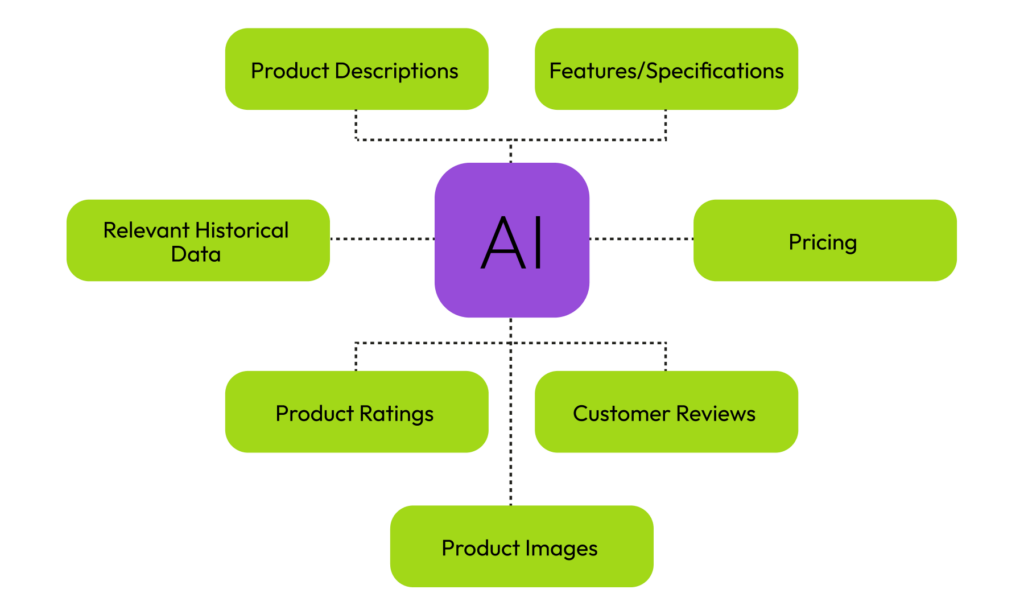
Google’s AI Overview is redefining how ecommerce brands capture visibility and engage with their shoppers. By prioritizing structured, concise information like product details, pricing, and user reviews, these overviews streamline the decision-making process for users.
For example, a query like “best noise-canceling headphones” might feature a carousel of top products with reviews and ratings, skipping over lengthy guides or ad-heavy pages.
While this shift might be reducing clicks for some ecommerce websites, it’s also leveling the playing field for smaller brands. Many expected AI Overviews to favor large, well-established companies, but the reality is that structured and precise data is the real key to success—not brand reputation or domain authority.
By embracing the demands of AI-driven visibility and understanding how to use Google AI Overview, you can position your ecommerce brand to thrive in the new search landscape. This evolution rewards those who prioritize user-first content, proving that clarity and relevance can outperform even the most recognized brand names.
If you’re asking yourself, “Is Google AI reducing clicks for ecommerce websites?” the answer is: not exactly. Instead, it’s creating opportunities for lesser-known brands to connect with their ideal audience at the perfect moment in their buying journey. What’s surprising is 80% of sources cited in AI Overviews don’t rank organically for the query, and even top-ranking pages have only an 8% chance of being featured.
By bypassing lengthy guides and favoring concise, structured product information, AI Overviews reward clarity and relevance. Even smaller brands with user-focused content can now outperform competitors relying on long-form strategies or massive ad budgets.
This focus on concise, actionable information extends to Google’s latest features, including personalized feeds showcasing shoppable products and videos, along with a dedicated deals page tailored to individual users.
Presenting products in a clear, structured format aligns these updates with the principles behind AI Overviews, creating even more opportunities for your ecommerce brand to stand out.
Google AI Overviews are transforming how ecommerce product information is utilized in search results. By prioritizing structured, user-friendly data and contextually relevant details, AI Overviews deliver concise, actionable summaries that meet the needs of today’s shoppers.
Instead of favoring traditional ranking factors like domain authority, AI Overviews focus on the quality of information—such as product descriptions, features, pricing, reviews, and images—to present the most relevant results directly within the search experience. This evolution not only enhances user convenience but also shifts the way ecommerce brands approach content strategies.

The flowchart above demonstrates how Google AI Overviews transform raw ecommerce data into concise, user-friendly search results. Let’s break it down step by step to see how this process works and what it means for your brand strategy:
Google AI Overviews use structured data, concise product details, and user-generated content (UGC) to deliver relevant and engaging results. Schema markup ensures key attributes like price, availability, and specifications are accurately extracted, while clear features and benefits help answer shopper queries. Reviews, ratings, and FAQs add credibility, and high-quality images with descriptive alt text enhance visual appeal, making the overview both informative and engaging for users.
Optimizing for Google AI Overviews is essential for ecommerce brands looking to increase your visibility and drive conversions. Understanding how to use Google AI Overview effectively allows you to create concise, structured content that directly addresses shoppers’ queries, making it crucial to refine your product pages and content strategies.
Incorporate Structured Data and Schema Markup
Structured data is essential for helping Google’s AI Overview understand and extract product information, such as price, availability, and specifications. Using schema markup ensures your data is properly formatted and ready for AI processing, increasing your chances of being featured.
Focus on Detailed and Accurate Product Descriptions
Google’s AI prioritizes concise, user-focused product descriptions that address common shopper queries. Pages with clear, detailed descriptions are more likely to be featured in overviews, especially those ranking higher in search results.

Enhance Listings With High-Quality Images and Reviews
High-resolution images and customer reviews are critical for engaging users and boosting your chances of being featured in AI Overviews. Google’s AI prioritizes listings that provide a clear, comprehensive view of the product.
Target Long-Tail Keywords and Match Search Intent
Long-tail keywords are favored by Google’s AI Overview for addressing specific user queries with comprehensive answers. Aligning your content with detailed search intent can improve your visibility.
Google AI Overview is shaking up ecommerce rankings by prioritizing structured, customer-focused content that delivers clarity and relevance. Learning how to use Google AI Overview strategically allows smaller brands to compete effectively by leveraging precise product data, customer reviews, and visually engaging content.
To succeed in this AI-driven environment:
By embracing these strategies, you can not only enhance your ecommerce brand’s search presence, but you can also provide a seamless, engaging experience for your customers.
Interested in learning more about the ins and outs of Google’s use of AI and how it can benefit your ecommerce business? Check out our webinar replay featuring Google’s Performance Product Lead Alex Ioch: Mastering Google Ads’ Disruptive AI From the Inside Out. Take advantage of our free AI Performance Review and start taking control of your brand’s presence across AI search experiences.
